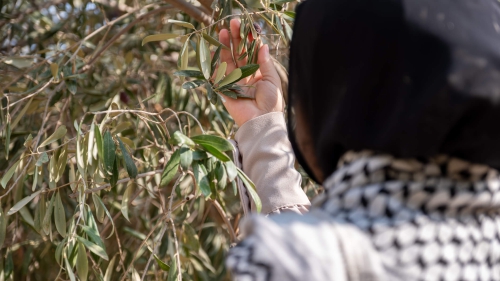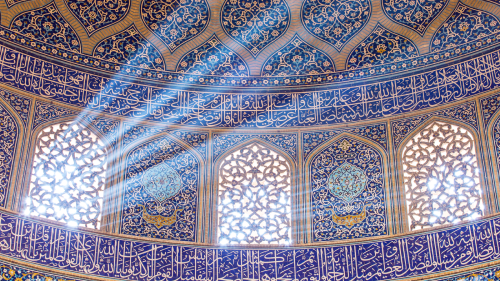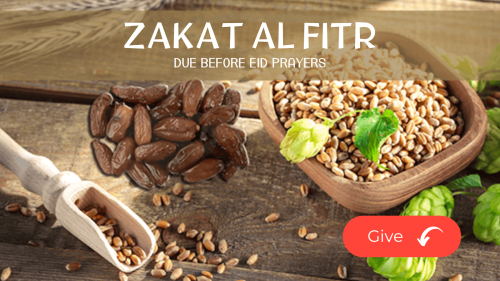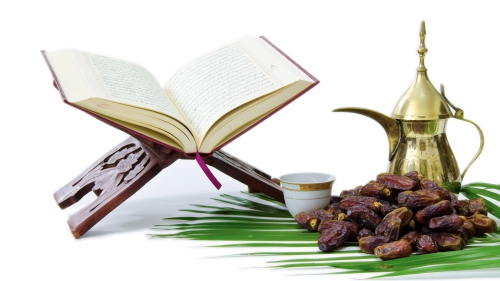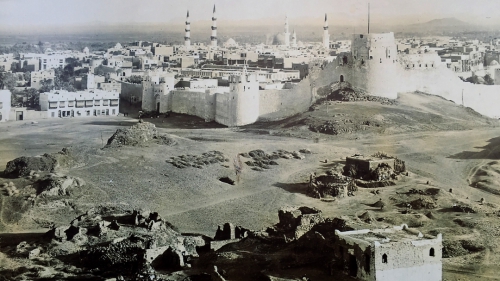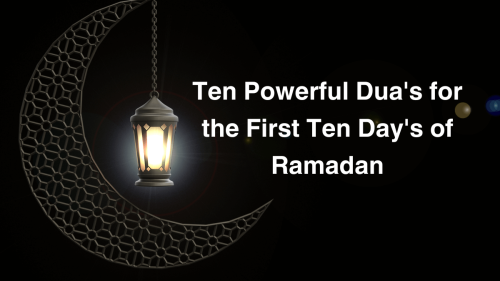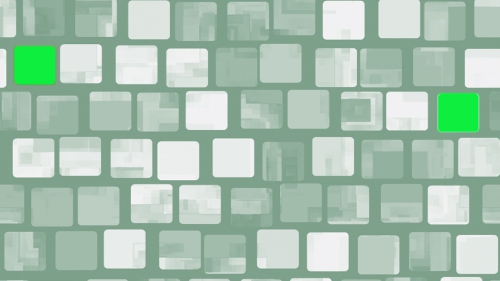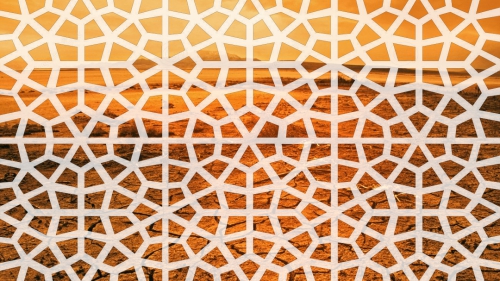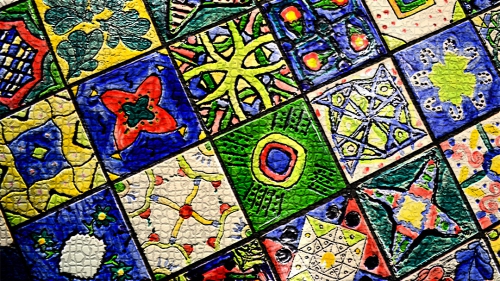Ready…Set…Ramadan!

Food is one part of our lives that has always brought people together. We pour our hearts into the preparation of our meals; and we sit together with our friends and family to enjoy the tastes, aromas, and enlightening conversation which accompanies a bountiful dinner. As Ramadan draws near, food becomes a smaller, but even more important part of our day. An empty stomach and a clear mind should provide the proper temperament necessary for basking in the glory of the month.
Ramadan is one of the holiest months of the year. It’s a time when Muslims engage in introspection, extra prayer and dua; and refrain from eating and drinking from dawn until after sunset. Fasting is one of the five pillars of Islam, and therefore a requirement for all those who are physically able to perform the task.
So how do we reap the benefits of Ramadan while still maintaining a well-balanced diet and exercise routine? Each one of us has different dietary needs based on our lifestyle, genes, and daily activities. Still the consensus is that the human body needs around 1,200 calories per day to function properly. During Ramadan, people typically eat two meals a day. Suhoor, the first meal, is eaten before dawn; and this meal should provide enough sustenance to get you through the day until sunset. Iftar, the second meal, is eaten shortly after sunset, typically in the company of family and friends. This means that a lot of rich, succulent foods are the norm, and after a long day of fasting, it is very easy to overeat. Selecting the proper foods for Suhoor and Iftar can mean the difference between hunger and thirst setting in early, or a sustained feeling of satiety throughout the day.
One element to keep in mind while selecting your foods for Ramadan is the caloric density of what you are eating. The Mayo Clinic defines caloric density as “The number of calories in a given amount of food.” Some foods have a high caloric density, which means that in a small portion of that food, there are a high number of calories. By choosing foods with a low caloric density, you are able to eat more, fill your stomach with healthier calories, and feel full longer. One glazed donut, for example, contains about 300 calories. Instead of the delicious but inefficient and unhealthy sugar-packed donut, you can eat a bowl of low sugar cereal with some fresh fruit, a glass of low-fat milk, and a peanut butter sandwich on whole-grain bread while consuming around the same number of calories. Although this is one extreme example, it’s easy to see which of these breakfasts will keep you feeling full longer.
Calculating the caloric density of your food is easy. All you need is a nutritional label and a simple mathematical equation. Divide the number of calories per serving by the number of grams in that serving (both of these should be listed on the nutritional label). This gives you the number of calories per gram of food. Foods with a low caloric density contain less than one and a half calories per gram. Foods that are considered high caloric density will contain four or more calories per gram. Simply put, by choosing your foods properly, you can eat four times the volume while consuming the same number of calories. No, this is not a recommendation to overeat, of course; but filling your body with the proper fuel is an essential part of Ramadan.
Some basic nutrients are required to sustain life, each of them providing a different caloric density. Carbohydrates are broken down into glucose to provide us with our main source of energy. Proteins are essential for rebuilding and repairing our tissue and helping our bodies make certain hormones. Both carbohydrates and proteins provide us with four calories per gram. Fats are the third group of nutrients that our bodies require. Through digestion, fats are broken down into fatty acids, and then used to help with the absorption of vitamins, treat certain diseases, and can even improve your health and body composition. Most important are the essential fatty acids which the body cannot make on its own, and must be consumed through the foods we eat. Fats are the highest caloric density nutrients and provide our bodies with nine calories per gram. Looking at the opposite end of this spectrum, we have water. Although water is essential for all life, it has a caloric density of zero and can help you feel full without adding calories to your diet. Another important nutrient is fiber. Our bodies do not digest fiber; instead, fiber slows the digestion process allowing us to absorb more nutrients from our food and provides bulk to our stool, which promotes a healthy digestive system. Foods that have high fiber and water content, such as fruits and vegetables, are an excellent choice for consuming large portions without filling your stomach with empty calories.
With a basic understanding of our food, we can move towards preparing our bodies for a month of fifteen or more hours a day with no nutrient intake. About four weeks before the start of Ramadan, most people can benefit from an adjustment to their eating habits. First, move to a three meals a day routine, and try to cut out snacking in between meals. This will get your body used to longer periods of not eating, and help reduce the shock to your metabolism. Do your best to decrease your sodium, sugar, and fat intake while increasing the amount of low caloric density foods. We already know why we should reduce the amount of sugar and fat we consume, but why reduce your sodium intake?
Sodium is one of the many minerals which are fundamental for sustaining life. Among its other roles, sodium helps to balance and regulate the body’s fluids. The FDA recommended daily allowance of sodium is “less than 2,300 milligrams,” equal to around one teaspoon of salt. According to the FDA, Americans consume about 3,400 milligrams of sodium daily. Aside from causing increased thirst, an excessive intake of sodium draws water into your blood vessels, increasing the fluid volume contained therein. This increase in volume translates to higher blood pressure and forces the heart to work harder than it should. Aside from the obvious risks associated with elevated blood pressure, when your heart works harder, it requires more energy and causes an increase in your metabolic rate using a higher number of calories to perform its daily function. The vast majority of our sodium intake comes from packaged foods and restaurant meals, so do your best to eat home-cooked meals when you can, and give that salt shaker a rest.
Coffee and tea both have rich histories in Islamic culture, as well as many other cultures. These drinks are a staple in nearly every household and are very difficult to give up. Caffeine is a powerful substance and can cause withdrawal symptoms when regular, daily ingestion is abruptly stopped. It is also a mild diuretic and causes fluid loss if overly consumed. Try to reduce the amount of coffee and tea in your diet and increase your water consumption a few weeks before the start of Ramadan. Two to three liters of water per day should be your goal in order to stave off the effects of dehydration.
About two weeks before the start of Ramadan, move from three meals a day to two by cutting out your lunch. This will likely be the hardest adjustment to make during your preparation phase but will be the most accurate simulation of a full day fast. Also, start to pay more attention to your fluid intake. The majority of your drinking should be done during breakfast and in the evening hours, with only small amounts during the daytime. By the time Ramadan arrives, your mind and body will be ready to go, and you can concentrate on using the month to its fullest potential. Spend your free moments in reflection, prayer, dua, family time, and sleep, but don’t neglect your exercise!
Fasting is said to provide increased concentration and focus, which can be very useful for starting or maintaining an exercise program. The decreased nutrient intake during this month can make it more difficult to find the energy to exercise, but without exercise, that decrease can lead to a loss of muscle. Exercise goals during Ramadan should be limited to maintenance and loss of body fat. Your first choice will be to decide what time of day to exercise. Joanna Soh, a Malaysian-based certified personal trainer and nutrition coach, maintains that the best time to exercise during Ramadan is after Iftar. At this moment, your body has satisfied its hunger, nutrients are being converted to energy for your muscles and brain, and you are able to rehydrate freely. Another suggestion would be to exercise after Taraweeh prayer if you can stay awake. By this time, your Iftar has begun to digest, you’re not feeling as full, and afterward, you can add a small, protein-rich snack between your two daily meals to help rebuild your muscle tissue. Before Suhoor is another great option. Consume a small amount of carbohydrate-rich food before exercising, and then enjoy your Suhoor post-workout to replenish your body’s spent energy. Exercising while fasting is not recommended for unseasoned exercisers; however, it is still an option if there is no other viable time. Just before Iftar you can exercise knowing that shortly afterward you will be able to break your fast, and above all, replenish the water lost during your workout. If this is your chosen time, be sure to moderate your intensity.
Ramadan is not the time to set audacious exercise goals. Instead, concentrate on maintaining your lean muscle and shedding some body fat. Turn down the intensity of your normal workout to about seventy percent. This will ensure that you are not exhausting yourself while allowing you to maintain your current state. Limit yourself to three to four days of exercise per week at about thirty to forty-five minute sessions each day. Chose exercises that you enjoy, or ones that you can enjoy together with your family. If you are a good multitasker, recite some Quran or do some dua together with your fitness.
When the blessed month comes to an end, it’s easy to revert to our normal daily lifestyle. If your pre-Ramadan lifestyle needed an adjustment, this is the best time to act. Your mind and stomach are used to your new healthy eating habits, and your body is used to your exercise routine under the more difficult conditions. Keep up these habits and maintain them year-round. The Prophet (Peace Be Upon Him) used to fast on Mondays and Thursdays throughout the year. Doing so will not only provide extra rewards in the next life; it also helps guarantee that you’re prepared for next Ramadan. Remember, its only eleven months away.
*****
Ali Othman has been an NSCA certified personal trainer for the past 13 years with specialization in weight loss, functional training, muscular hypertrophy, and human nutrition. He also works in the Technical Department at IFANCA and manages IFANCA business activities in South Korea.
Reprinted from the Spring 2020 issue of Halal Consumer© magazine with permission from the Islamic Food and Nutrition Council of America (IFANCA®) and Halal Consumer© magazine.
Topics: Diet, Food, Health, Ramadan Channel: Ramadan - Day 1
Views: 5651
Related Suggestions












